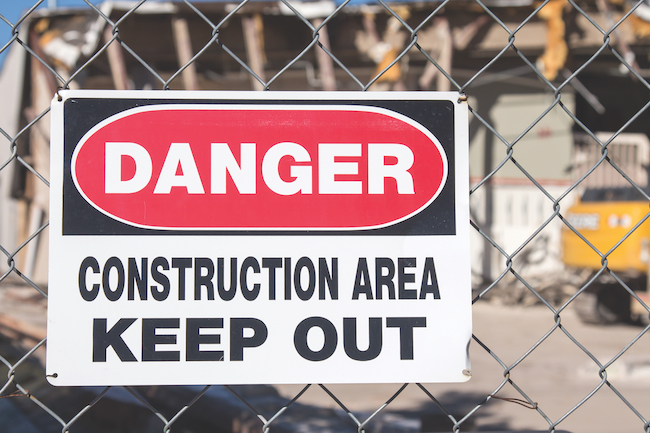
Ontario Court of Appeal expands potential risk to employers
By Jeremy Warning, John Illingworth, and Cheryl A. Edwards
Decision could significantly expand liabilities on construction projects

A recent decision suggests an employer may have broad OHSA responsibilities solely on the basis that it had a worker on the project — perhaps despite engaging a constructor. (Getty Images)
On April 23, the Ontario Court of Appeal released its decision in Ontario (Labour) v. Sudbury (City).
The decision should be of concern to all owners and employers, as it could significantly expand liabilities under the Ontario Occupational Health and Safety Act (OHSA) on construction projects and affect advance planning and structures for construction project safety and management.
It suggests that an employer may have broad OHSA responsibilities solely on the basis that it had a worker on the project — perhaps despite engaging a constructor.
It appears to set aside equitable considerations of context and the scope of an employer’s role on the project — or, at least, leave their consideration to the discretion of OH&S inspectors or Crown prosecutors.
Ontario (Labour) v. Sudbury (City)
In this case, the City of Greater Sudbury (the “City”) tendered a typical construction project. The City contracted with a general contractor (the “GC”) who undertook the project as its “constructor” with overall responsibility for health and safety.
As is common, the City monitored project quality and contract compliance through inspectors it sent to the project.
Tragically, in September 2015, a member of the public was struck and killed by a road grader operated by an employee of the GC.
At the time of the accident, there was no signaller, fencing, or paid duty assistance from the police. A City inspector was not on the project.
The Ministry of Labour investigated and, eventually, charged the City with various OHSA violations. Amongst other things, the City was charged as an “employer” alleging it had failed to ensure a signaller was used and a fence was erected as required.
After a trial, the City was acquitted of all charges on the basis that, in the circumstances, it was not an “employer.”
After an earlier Crown appeal was unsuccessful, the matter came before the Ontario Court of Appeal.
A very narrow rationale was applied in finding that a party who meets the OHSA definition of “employer” is responsible for ensuring compliance at the project.
Therefore, the City had to ensure compliance because it sent inspectors to the project. The Court did not consider factors such as the scope of the City’s role on the project.

Sudbury’s Big Nickel landmark is pictured at sunset. (Aqnus/Adobe Stock)
Broad implications, narrow rationale
The decision leaves stakeholders in the Ontario construction industry with little guidance about how the OHSA employer obligations should or will be applied.
A number of implications result, including:
- Expanded discretion for inspectors and prosecutors: The consideration of contextual circumstances, relevant to whether a party on a construction project is an “employer,” appears to be a matter left to an OH&S inspector or prosecutor.
- Ongoing investigations and prosecutions: The decision could have immediate implications for “owners” and “employers” being investigated or facing charges under the OHSA. The approach to, and investigation of, possible OHSA contraventions or the defence of the OHSA charges may have been guided by the law before the decision. The Ministry or Crown could pivot to adopt the rationale of the decision.
- Implications for due diligence: Now, once a party is found to be an “employer” on a construction project, it can be prosecuted for any OHSA violation that occurs on the project, regardless of the party’s proximity to the violation. Avoiding a conviction would require the demonstration that all reasonable care had been taken. But how is all reasonable care demonstrated by an owner or employer who is not proximate to the violation to appreciate what has occurred? In fairness, shouldn’t the Crown have to prove the defendant had a legal obligation it failed to meet before considering due diligence?
- Risks for owners sending workers into a project: Owners may want to send workers onto the project because to perform maintenance tasks or to inspect for quality control or contract compliance. However, in light of the decision, these actions will have to be reassessed. The reassessment may mean looking at the timing and scope of work to be performed and providing updated instructions to quality inspectors in order to manage their role. Further, the decision will place owners in a catch-22. They must exercise all reasonable care to ensure safety on the project but, if they exercise too much control, they risk becoming the “constructor.”
Final thoughts
The decision may represent a fundamental shift in the approach to owner and employer responsibilities on construction projects.
Future cases may be required to decide whether the broad obligations flowing from the decision will be refined by concepts such as control or the employer’s sphere of operations on the project.
For greater detail, please see our OHS & Workers’ Compensation Advisor.
Jeremy Warning, John Illingworth, and Cheryl A. Edwards are partners with Mathews Dinsdale, a national labour and employment law firm.